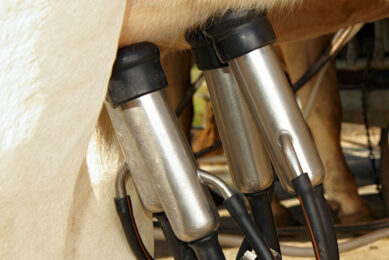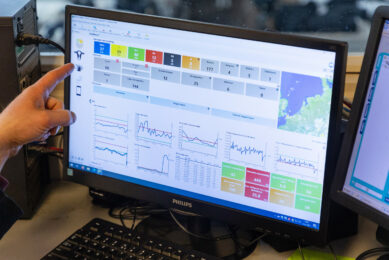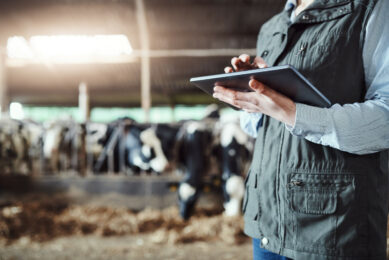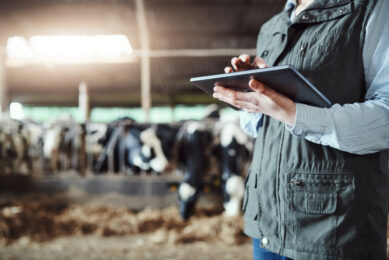Precision technologies to maximise reproductive performance in dairy cows
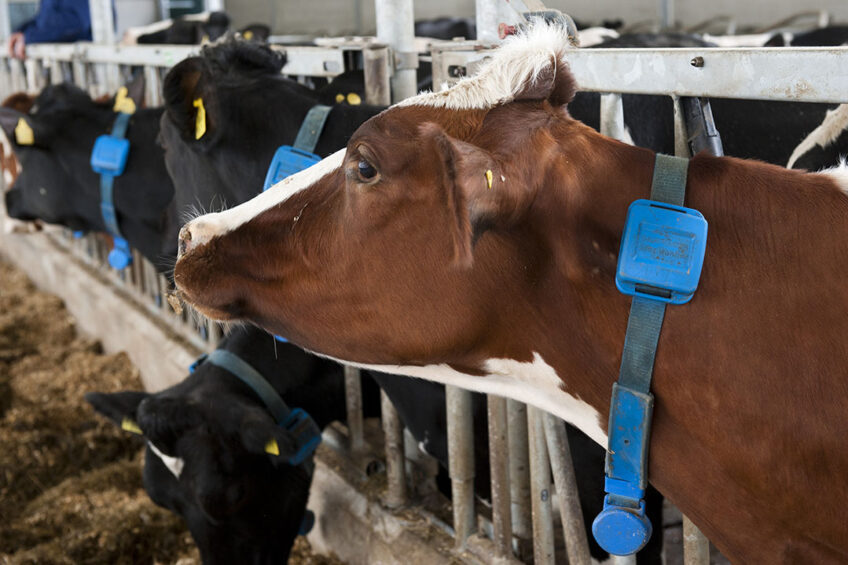
Reproductive performance is a key factor in dairy cattle management, and reproductive inefficiency has a negative impact on the economic sustainability of the dairy industry. Due to increases in dairy farm size and labour costs, precision technologies have been introduced to optimise dairy cattle reproductive performance.
These technologies have great potential to monitor individual dairy cows automatically, to serve as a management tool for farmers and to improve dairy cow welfare, health and reproductive performance. The time of oestrus and the time when the dairy cow starts calving are 2 key points in the reproductive process. Knowledge of these 2 moments using precision technologies allows farmers to maximise the attention given to an individual dairy cow during oestrus and calving to improve reproductive performance.
Precision technologies
Technological advancements have significantly changed production methods in all fields, including dairy cattle farming. However, the adoption rate of each advancement varies based on the cost, infrastructure availability, cultural adaptability and the level of training needed.
We are living in the fourth technological and industrial revolution era, which is about using cyber-physical systems and wireless communication.
Precision technologies designed specifically for dairy industry applications deal with the integration of communication systems, data and information technologies and sustainable devices with the aim of improving reproduction performance, lowering operational and labour costs and providing reliable and accurate data and analyses for management and planning purposes.
Sensors
Sensors are used to record changes in specific physical and physiological parameters in dairy cattle – such as vaginal temperature, feeding and drinking behaviour, rumination, standing and lying bouts, tail raising, mounting pressure and resting – and to convert them into a measurable signal such as electrical voltage.
Reproductive performance
Reproductive performance is calculated as the number of dairy cows that became pregnant divided by the number of cows that were eligible to get pregnant. Common measures of reproductive performance are days to first service, days to conception, calving interval, services per conception, conception rate, oestrus detection rate and pregnancy rate.
Automatic oestrus detection
Sensors used to monitor dairy cattle reproductive performance take advantage of certain physiological responses relevant to reproductive function. Dairy cows indicate oestrus through behavioural changes including increased activity such as walking, grouping of sexually active animals, reduction in the time spent eating, resting, ruminating, and milk yield.
The most reliable sign of oestrus is standing of the cow when mounted by another cow for approximately 5 seconds or more. Additionally, body temperature fluctuates around oestrus, decreasing around 0.5°C the day before oestrus, increasing during oestrus and decreasing at the time of ovulation. Sensors applied to automatically detect oestrus are described below.
Pedometers
Pedometers measure the number of steps each dairy cow takes and allow for comparison with previously recorded activity for the same cow, leading to automated oestrus detection when a certain factor of increase is measured.
Pressure-sensitive mount detectors
Pressure-sensitive mount detectors track oestrus using a wireless transmitter attached above the tail of a dairy cow to digitally send a data stream with the date, time and duration of every mounting event. All mounting data is collected, stored and instantly reported to the farmer through software.
Collars with inertial measurement units
Collars with inertial measurement units collect acceleration and gyroscope data and are used to estimate patterns associated with the dairy cow walking that indicate oestrus.
Thermal imaging systems
Several studies have reported an elevation of body temperature in dairy cows during oestrus, a decrease around ovulation and a subsequent increase and decrease during mid-oestrus and 2-3 days before oestrus, respectively.
Infrared thermography is a non-invasive technology that provides real-time thermal data to detect oestrus. Infrared thermography can predict ovulation 24-48 hours in advance based on variations in skin temperature measured at the vulva of dairy cows.
Automatic calving detection
Calving needs to be monitored closely to obtain optimal reproductive performance. Perinatal mortality of calves and complications such as uterine prolapse, inflammation of uterine layers (metritis, endometritis) may happen following calving. Therefore, timely assistance at calving is critical to ensure the survival of dairy cows and calves and to improve reproductive performance of dairy cattle.
Calving detection methods are based on measuring the dairy cow’s physiological changes in relation to the expulsion of the calf (vaginal temperature, tail position) or on abdominal muscle contractions. Sensors applied to automatically detect different changes that occur around or during calving are described below.
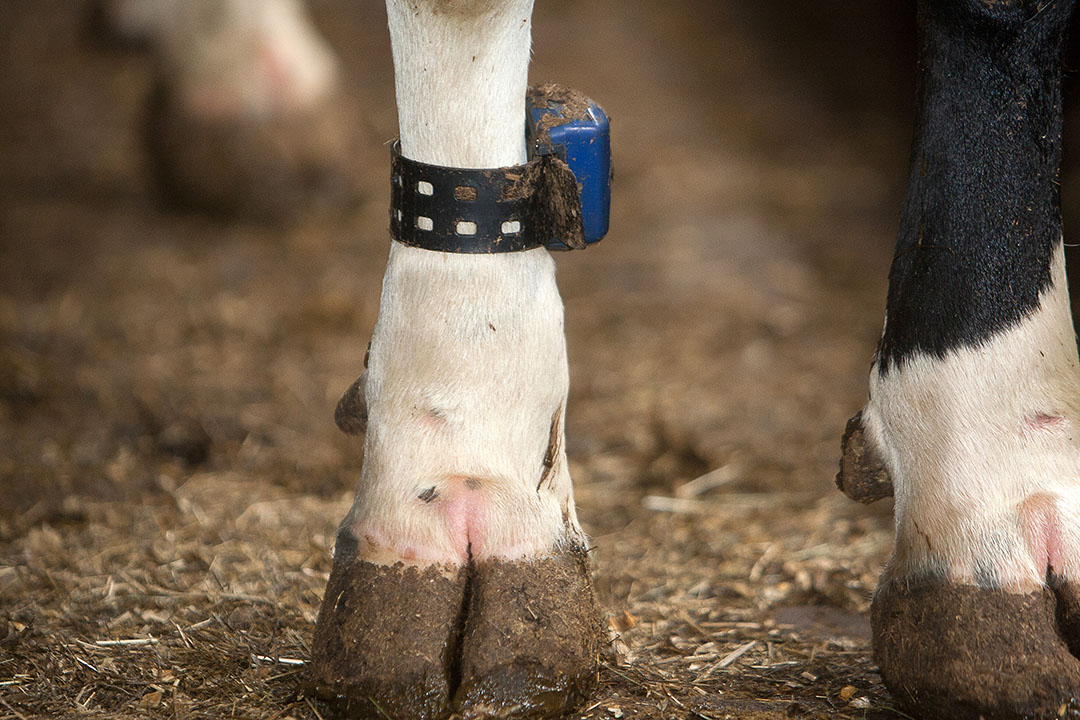
Inclinometers and accelerometers
Inclinometers and accelerometers are used to detect tail raising and behavioural changes occurring around the time of calving. Cows tend to isolate themselves from the rest of the herd on the calving day, and they increase the number of lying bouts. Additionally, tail raising duration and frequency increase as early as 5 days before parturition, and feeding, drinking and rumination activity decrease around parturition.
Pressure sensors
Abdominal belts containing pressure sensors are used to monitor uterine contractions. Once the uterine contraction is detected by the pressure sensor, a radio wave signal is generated and forwarded to a receiver to analyse the data, and then voice and/or text messages will be sent to the farmer’s mobile phone providing warning of the impending calving.
Intra-vaginal thermometers
Vaginal temperature is 0.4-0.6°C lower on the day of calving compared to 48 hours before calving, and intra-vaginal thermometers are used to detect the drop in body temperature.
Cameras
Video cameras can identify the precise time of calving and, using artificial intelligence and neural networks, they can generate an alert at the time of calving and send it to the farmer, breeder, technician or veterinarian to decide on the action to be taken.
Conclusion
Precision technologies improve the reproductive performance of dairy cattle, with all the inherent economic and environmental advantages, and bring significant welfare improvements through increased predictability of oestrus and calving time. Furthermore, calving monitoring and assistance using sensors reduce the incidence of stillbirth and complications such as post-partum endometritis and uterine infections.
Sensors applied for oestrus and calving detection provide non-invasive remote monitoring of dairy cows to ensure enhanced reproductive performance. However, further research is required to have more accurate, robust, on-farm oestrus and calving detection systems.
Join 13,000+ subscribers
Subscribe to our newsletter to stay updated about all the need-to-know content in the dairy sector, two times a week.



